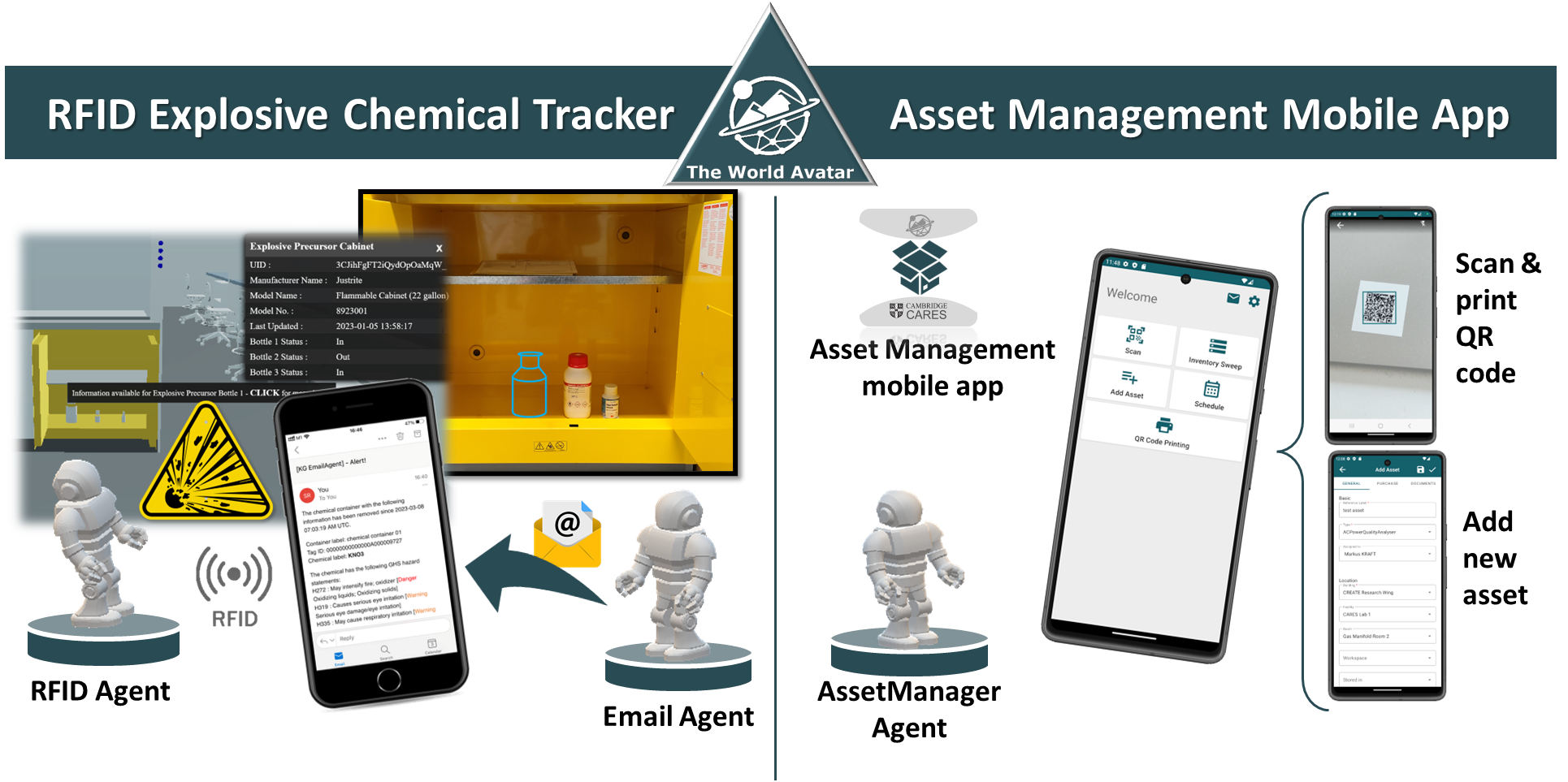Technical Report 318, c4e-Preprint Series, Cambridge
The Digital Lab Manager: Automating Research Support
Reference: Technical Report 318, c4e-Preprint Series, Cambridge, 2024
- A novel framework for digitalising management of research laboratories is demonstrated.
- Knowledge on equipment, chemistry, and operations are integrated via semantic web.
- Enhancing safety via automated tracking of explosive precursors.
- Dynamic knowledge graphs facilitate use of unified user interfaces for managers.
- Mobile asset management app provides instant information access for lab users.
 Laboratory management automation is essential for achieving interoperability in the domain of experimental research and accelerating scientific discovery. The integration of resources and the sharing of knowledge across organisations enable scientific discoveries to be accelerated by increasing the productivity of laboratories, optimising funding efficiency, and addressing emerging global challenges. This paper presents a novel framework for digitalising and automating the administration of research laboratories through The World Avatar, an all-encompassing dynamic knowledge graph. This Digital Laboratory Framework serves as a flexible tool, enabling users to efficiently leverage data from diverse systems and formats without being confined to a specific software or protocol. Establishing dedicated ontologies and agents and combining them with technologies such as QR codes, RFID tags, and mobile apps, enabled us to develop modular applications that tackle some key challenges related to lab management. Here, we showcase an automated tracking and intervention system for explosive chemicals as well as an easy-to-use mobile application for asset management and information retrieval. Implementing these, we have achieved semantic linking of BIM and BMS data with laboratory inventory and chemical knowledge. Our approach can capture the crucial data points and reduce inventory processing time. All data provenance is recorded following the FAIR principles, ensuring its accessibility and interoperability.
Laboratory management automation is essential for achieving interoperability in the domain of experimental research and accelerating scientific discovery. The integration of resources and the sharing of knowledge across organisations enable scientific discoveries to be accelerated by increasing the productivity of laboratories, optimising funding efficiency, and addressing emerging global challenges. This paper presents a novel framework for digitalising and automating the administration of research laboratories through The World Avatar, an all-encompassing dynamic knowledge graph. This Digital Laboratory Framework serves as a flexible tool, enabling users to efficiently leverage data from diverse systems and formats without being confined to a specific software or protocol. Establishing dedicated ontologies and agents and combining them with technologies such as QR codes, RFID tags, and mobile apps, enabled us to develop modular applications that tackle some key challenges related to lab management. Here, we showcase an automated tracking and intervention system for explosive chemicals as well as an easy-to-use mobile application for asset management and information retrieval. Implementing these, we have achieved semantic linking of BIM and BMS data with laboratory inventory and chemical knowledge. Our approach can capture the crucial data points and reduce inventory processing time. All data provenance is recorded following the FAIR principles, ensuring its accessibility and interoperability.
PDF (8.0 MB)



